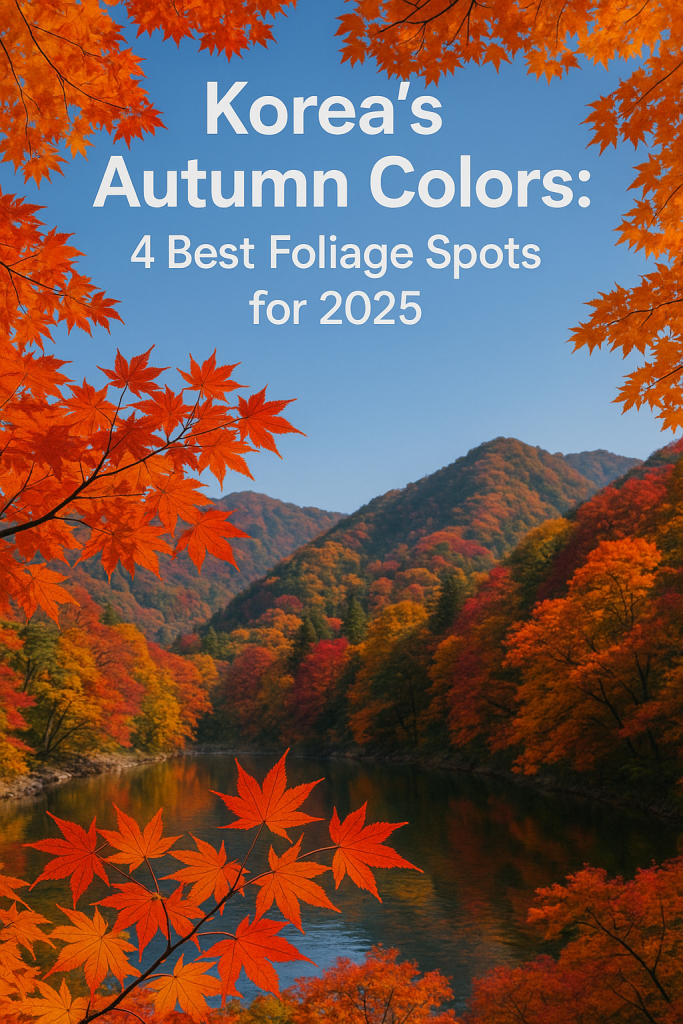
An Autumn Stroll: Korea's Arboretums & Gardens
Beyond the vibrant autumn flower festivals, Korea offers tranquil escapes in its numerous arboretums and gardens. These spaces, designed for plant conservation and public relaxation, are perfect for a peaceful day out. Let's explore some of the best green spaces across the nation.
Top Picks for 2025
These nationally recognized arboretums and popular botanical gardens are must-visits for their scale, beauty, and diverse collections.
- National Sejong Arboretum (세종 국립세종수목원)
- National Baekdudaegan Arboretum (봉화 국립백두대간수목원)
- Hantaek Botanical Garden (용인 한택식물원)
- The Garden of Morning Calm (가평 아침고요수목원)
- Pyunggang Botanical Garden (포천 평강식물원)
- Daegu Arboretum (대구수목원)
- Gyeongsangbuk-do Arboretum (포항 경상북도수목원)
- Chollipo Arboretum (태안 천리포수목원)
- Jeonbuk Provincial Arboretum (전주 전북수목원)
- Shingu College Botanic Garden (성남 신구대식물원)
Explore by Theme
Looking for a specific experience? Korean gardens are incredibly diverse. Find a spot that perfectly matches your travel theme.
Beautiful Private Gardens
- Jurarium Garden (Gyeongbuk)
- Manwol Garden (Gyeongnam)
- Sangsang Sheep Farm & Cafe (Gangwon)
- Choga Garden (Jeonnam)
- Mancheonha Garden (Chungbuk)
- Gangneung Chodang Garden (Gangwon)
Fragrant & Aromatic Gardens
- Garden Studio Hyanggi Garden
- Mungyeong Omija Theme Park
- Mujuland Lavender Town
- Anseong Farmland Herb Garden
- Yangpyeong Herb Hills
- Taean Kkotji Garden
Traditional & Artistic Gardens
- Gurye Hwaeomsa Temple Garden
- Andong Hahoe Village Garden
- Namwon Gwanghanruwon Garden
- Buyeo Gungnamji Pond
- Naju Baekho Literature Museum Garden
- Jeju Museum of Art Garden
Gardens for Fun & Activities
These locations offer more than just a walk, with ecological exhibits, vast landscapes, and unique experiences. They're perfect for a full-day trip, perhaps combined with an urban adventure like the Han River Water Bus for those visiting the capital region.
- National Institute of Ecology (Seocheon)
- Suncheonman Bay National Garden (Suncheon)
- Hampyeong Garden (Hampyeong)
- Jeju Gotjawal Provincial Park
- Andong Culture & Tourism Complex Garden
- Gunsan Seonyudo Garden
Newly Opened Gardens
Discover the latest additions to Korea's garden map, offering fresh designs and unique local themes.
- Gyeonggi-do Hwaseong Flower Village Garden
- Ulleungdo Marine Botanical Garden
- Jeonju Hanok Village Garden
- Cheongju Garden Expo Garden
- Andong Garden Theme Park
- Incheon Cheongna International City Garden
Frequently Asked Questions (Q&A)
Are most arboretums and gardens open year-round?
Yes, the vast majority are open all year. However, the scenery changes dramatically with the seasons. Autumn offers beautiful foliage, while spring is famous for cherry blossoms and tulips. Always check official websites for seasonal closures or specific festival dates.
Do I need to pay for entry?
It varies. National and provincial arboretums (like Sejong, Baekdudaegan) and major private gardens (like Hantaek, Morning Calm) typically have admission fees. Many smaller city parks or temple gardens are free to enter.
Are these places suitable for families with children?
Absolutely. Most gardens have well-paved, gentle walking paths suitable for strollers and young children. Many, like the National Institute of Ecology, have dedicated children's exhibits and play areas, making them excellent educational destinations.
Planning Your Garden Visit
- Best Season: While autumn is fantastic for foliage, spring (April-May) is prime time for flowers. Each season offers a unique charm.
- What to Bring: Comfortable walking shoes are essential. Bring sun protection (hat, sunscreen) and water, as many gardens are large and open.
- Getting Around: While some city gardens are subway-accessible, many of the most beautiful spots are in rural areas. For flexibility, consider renting a car or using a central city like Daejeon, a hub of science and culture, as a travel base.
- More Information: For a comprehensive list and map, refer to the official guide from the Korea Tourism Organization.
- Etiquette: Please stay on designated paths to protect the plant life. Do not pick flowers or disturb the wildlife.